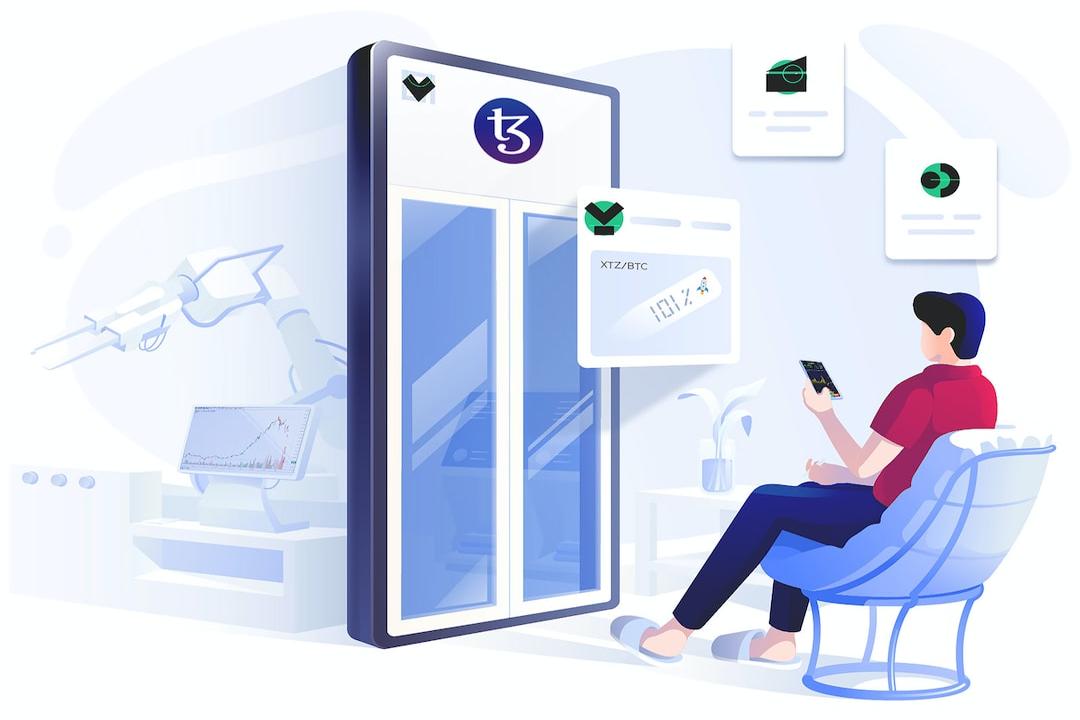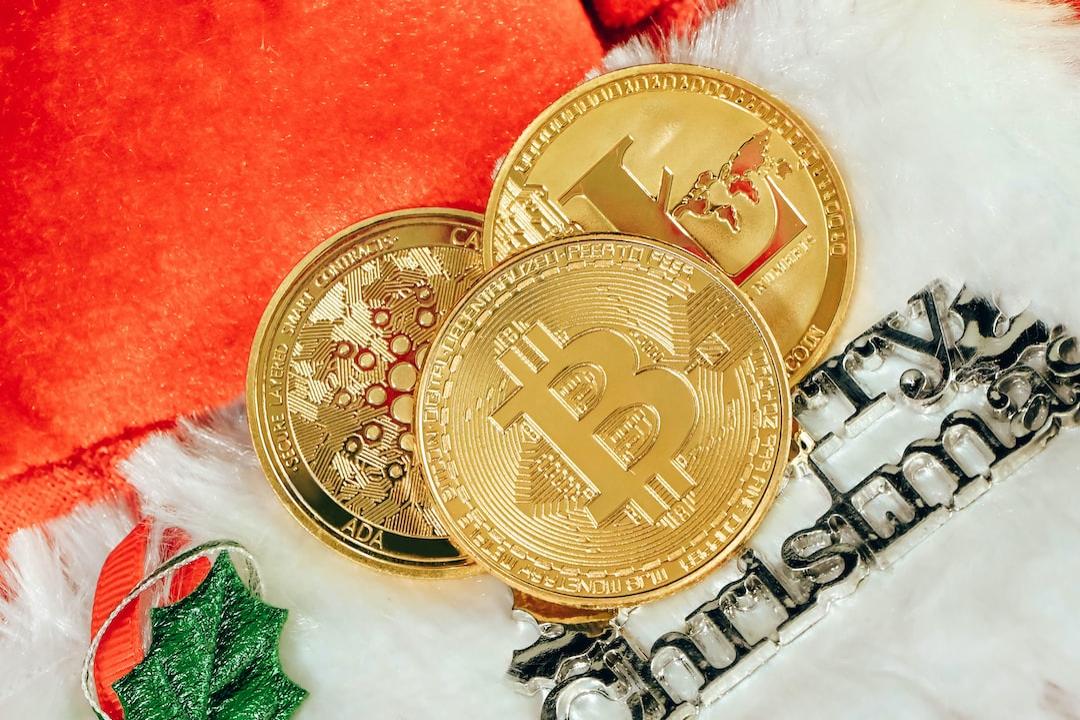Dr. Jingo: It takes about 3-5 hours of fragmented time to browse information. Most of the information comes from Twitter, WeChat groups, and Telegram. Some good friends also introduce me to some excellent projects, and then we schedule meetings to review their documents. I also spend some time writing tweets, so my day is usually quite busy.
I used to hope that someone could develop a fully automated information push system, which directly pushes various aggregated information to your mobile phone terminal, similar to the push information on the old BlackBerry phones. But I actually enjoy the process of filtering information myself. For example, the Ordinals protocol was discovered by me through browsing news reports online, and none of the aggregation platforms mentioned it at that time. So, in terms of information channels, I think it’s a combination of random browsing and receiving information from friends, and I also take the time to read project information left by netizens under tweets.
BlockBeats: We can see that there are more and more Bitcoin Layer 2 projects recently. How do you view these Layer 2 projects appearing in the market? Besides, which projects or assets do you currently favor?
Dr. Jingo: I currently have a preference for teams and products that focus on Layer 1 development, so some people also call me a BTC Layer 1 purist. In the early days, debates about BRC20 were often focused on the technical aspect and whether it was necessary. Many developers from the West had a lot of doubts about BRC20 and didn’t think highly of it, considering it outdated and not very decentralized. However, as the market developed, everyone gradually accepted this fact, and I see more and more Western developers entering the BRC20 ecosystem.
Currently, I have observed a phenomenon where the Chinese community mainly discusses BTC Layer 2, while foreigners have started to focus on Layer 1, introducing many projects related to lending, AMM, Defi, and more. From the narrative and the overall development of the industry, it seems that we are entering the BTC Layer 2 era on a large scale quite quickly. I personally believe that BTC Layer 2 should be a medium to long-term plan, at least a two to three-year plan.
However, whether it is Layer 1 or Layer 2, the artificial impact on BTC and its assets due to the halving cycle will further drive the increase in BTC price. From the perspective of reducing BTC circulation and supply through collateralization, I think it plays a role similar to that of the halving narrative. Interestingly, some projects exchange their own tokens for valuable bitcoins, and users exchange their bitcoins for these tokens in pursuit of high returns. Project parties have profited greatly from this exchange process, and this phenomenon is worth serious consideration by retail investors.
(BlockBeats: Image)
Currently, I am more exposed to foreign projects that I find promising, such as Ordiswap, Ordibank, and Liquidium. Liquidium received early investments from Bitcoin Magazine and Bitcoin Frontier Fund. It is a project that focuses on Bitcoin collateralization. They provide a certain degree of liquidity or exit channels. Recently, some people have been researching how to issue stablecoins on Bitcoin, such as Makerdao. I find these things quite interesting because stablecoins are currently missing but essential in the upcoming BTC DeFi Summer.
BlockBeats: What signals or criteria do you think we can use to discuss Bitcoin Layer 2 now?
Dr. Jingo: My logic is clear. First, let me explain why I am promoting Ordinals. I believe there are three important narratives, which I have mentioned in my article. First, compared to Ethereum NFTs, the data on the Bitcoin chain is permanently immutable, which means that individual digital sovereignty is guaranteed. Additionally, Bitcoin has PSBT, which allows users to complete transactions even if all the centralized exchanges in the world refuse to let them trade their assets. This is something that no other chain can achieve. Second, after the halving, Ordinals brings additional income to miners, which can help maintain the security budget of Bitcoin or provide a viable solution. In the past year, we have seen that the transaction fees brought by BRC20 or collaterals sometimes accounted for about 20% to 30% of the entire network. This provides a certain guarantee for the security budget of Bitcoin after the halving. Third, the so-called digital gold transforming into a digital gold jewelry market will make Bitcoin more interesting.
From the current perspective, many Layer 2 projects have nothing to do with these three narratives. Therefore, I believe that the ideal state of L2 is to develop the Bitcoin ecosystem to a certain extent. For example, miner income accounts for 20%, and transaction fees are reduced to between 3% and 5%. At the same time, everyone truly feels that the security tax is high, and more people may switch to Layer 2, willing to sacrifice a certain level of security to save costs. The core problem of Layer 2 is sacrificing security, and all Layer 2 projects more or less reduce the native security of Bitcoin. My deduction is that when the first layer of Bitcoin becomes busy to a certain extent, and miner income reaches a certain equilibrium, and the number of Bitcoin users reaches a certain level, L2 will have the opportunity to take off. It’s like a hotel getting overcrowded, and some people choose to stay in nearby inns. But what I’m saying is just a deduction, and the final evolutionary path is determined by the market and the choices of numerous users.
BlockBeats: The recent promotion of the OP_CAT soft fork by Taproot Wizards has sparked a lot of discussion in the community, especially in the English-speaking community. Of course, there are divergent opinions. Some people think that although this is not a short-term thing, it is worth looking forward to. If it is really completed, it will bring significant progress to Bitcoin’s scalability, Bitcoin smart contracts, and Bitcoin ZK rollup Layer 2. However, some people think that this is a very dangerous soft fork. How do you view the OP_CAT soft fork?
Dr. Jingo: The Taproot Wizards’ udi sometimes messages me, so we chat occasionally, and I even almost participated in their financing. Speaking of the OP_CAT soft fork, I am explicitly supportive. I think there are many paths for Bitcoin’s ecosystem development, and promoting the OPCAT upgrade is actually a very smart move. It will help developers reduce the difficulty of developing on BTC and improve BTC’s scalability without compromising its security.
Therefore, I believe that Bitcoin, as the most secure blockchain, can support some innovations that do not affect security and decentralization. We should not stick to dogmatism. So I think I might belong to the least popular reformist camp. Most community members either strongly support reform or are very conservative, and I happen to be someone in the middle, slightly leaning to the left or right. But I believe this may be the most practical path for innovation on Bitcoin.
So, I am quite excited about udi and their promotion of the OP_CAT BIP, and I am indeed supporting them in doing this. This may bring more significant meaning than any other project and is undoubtedly challenging. In summary, if I can contribute or make some changes to Bitcoin, I think it is something to be proud of.
BlockBeats: Overseas media has given three criteria for BTC Layer 2. Can they be achieved technically? Even if they can be achieved, will the economic effects and efficiency be ideal?
Dr. Jingo: I have seen the three editorial principles about L2 proposed by Bitcoin Magazine, and PanteraCapital’s research report also mentioned similar ones. Personally, I think the discussion about L2 is beneficial. At least users are starting to think about what L2 is, its purpose, and what problems it can solve. This is progress. However, I also think these three standards are theoretical and idealized. We must remember that BTC is the most permissionless. The ultimate definition will be formed by the market and users, becoming a “convention.” This is my view on L2 standards.
BlockBeats: Before studying the Bitcoin ecosystem, you focused more on NFTs and also participated in the Chinese community of Bored Ape Yacht Club (BAYC). So, I would like to know your current view on BAYC because recently the price of BAYC was surpassed by Punks comics. There have been many discussions in the NFT community about this. Will BAYC still be the leader in the future?
Dr. Jingo: BAYC holders have already made a lot of money, especially early buyers. At the beginning, no one really knew what it was or that it could be speculated to reach 150 ETH. Many people even thought the artwork was ugly. However, when the price of BAYC rose to 30 ETH, or even peaked at over 100 ETH, everyone thought it was beautiful and felt proud to have such an avatar. So, I can say that I am both an observer and a participant, and I can strongly sense the change in emotions. People’s aesthetics seem to change with the price fluctuations.
Finally, I have observed that NFTs are also a social experiment. Social experiments always have failures or fatigue when people lose continuous interest in something. After two to three years, NFTs have reached a trough in terms of price. Therefore, I personally don’t have much disappointment specifically about BAYC but rather a bit of fatigue. I have held onto my Yuga Labs assets until now. Overall, I think NFTs are driven more by emotions, and the price fluctuations reflect short- to medium-term behavior. However, if you truly believe in NFTs, I think these assets should be held in the medium to long term. I think compared to Ponzi schemes and worthless assets, Yuga’s assets are worth holding on to.
(BlockBeats: Image)BlockBeats: Bitcoin NFT has always been in a state of competition, and people have different opinions on the leading Bitcoin NFT. Dr. Jin Gou, what do you think of the current form of Bitcoin NFT, and what criteria do you think an ideal Bitcoin blue-chip NFT should meet?
Dr. Jin Gou: This is an interesting topic. Initially, BAYC and PUNKS competed for the leading position based on the floor price. I think the leading position is a concept that is relative to time. I remember there were some evaluation systems for NFTs, which included many indicators such as the ability of the project party, the artistic attributes of NFTs, and the community. These are generally applicable to BTC, but I think BTC’s NFT culture has some differences from ETH, especially in terms of narrative over time. We often hear people say “first is first”, and this point is widely agreed upon in the BTC community.
Emotions and narratives can change, but time is an objective existence that we cannot change. BTC is also a timeline. For example, in the Ordinals protocol, based on the standard of time, there may be two types of NFTs: one is the early ones with low serial numbers, such as Sub100 or Sub1000. These inscriptions symbolize the OG status in the inscriptions and are the ultimate collection goal for collectors. However, the drawback is that early inscriptions are often rare and have a small community, which may result in less liquidity in the market. But this type of inscription has the opportunity to be showcased through auctions. Their scarcity is directly locked by time.

Ranking of Bitcoin NFT market value at the time of publication
In terms of the Ordinals standard, the 10K project, NodeMonkes, has recently performed very strongly. It is the earliest 10K project in a series, with excellent developers and a good community. Therefore, its price has been steadily rising, and its market value has been gradually increasing among all NFT series, demonstrating its leadership. I have also spent a lot of time on this project and have provided many suggestions on the issuance method to the project party, so I also have an honorary NodeMonkey avatar. There are many potential projects on Ordinals, such as Bitcoin Frog, OMB Maxi, Bitcoin Punks, Ninjia, etc., each with its own story and community. Especially Bitcoin Frog has been the leader for a long time, leading in terms of trading volume and floor price. I think these projects also have the opportunity to become leaders in the future.
BlockBeats: What interesting things do you think will happen at the Bitcoin conference and Ordinals HK event in May this year? What are your expectations compared to 2023?
Dr. Jin Gou: There should be some substantial differences. In 2023, a few people in the community pooled their own money to organize the event, purely out of love. At that time, in April, many hats were sponsored, and there was also an airdrop of Bitcoin Frog. The Bitcoin community in Hong Kong still maintains its unique style and rarely socializes or throws parties. Everyone still has an attitude of watching the excitement.
But with the rising trend of Bitcoin’s price, the enthusiasm for offline events will also increase. Everyone’s emotions are good. The Bitcoin conference in Hong Kong in May this year is a historic moment to bring Bitcoin to Hong Kong. Therefore, the Ordinals Asia event also invited many people, such as Udi, the founder of the Great Wizard we mentioned earlier, and Domo, the founder of BRC20, have confirmed their attendance. Another thing I feel is that this gathering should be very global. It will be a great gathering for mainland China, Hong Kong, and many friends abroad.
Currently, I am working with another doctor from Silicon Valley and a friend from Dubai in a Bitcoin-related laboratory. In the early stages of the Ordinals protocol, we wanted to establish an Ordinals Foundation, but later we found that the name “Foundation” was often criticized, and people may not like Ethereum Foundation. So we redesigned the name to Foundinals lab, which is a combination of Foundation and Ordinals, as well as Founder and Ordinals. We hope to use our knowledge and understanding to help more developers enter the BTC ecosystem and more users join the BTC ecosystem. We still consider the revival and greatness of the BTC ecosystem as our mission and responsibility, spreading knowledge and educating users.
As for the theme of 2024, we want to promote more communication between the Chinese and Western Bitcoin communities, reduce cultural and other barriers, and truly make Bitcoin a global movement. I personally don’t think the struggle for discourse power in Bitcoin is meaningful because Bitcoin itself is a global movement. We should embrace Bitcoin together, which is our common goal, on the same channel. Obviously, foreigners also want to understand the Chinese market. BRC20 has already demonstrated this. The next step in the development and cultivation of the Bitcoin ecosystem should focus on bridging the markets and users of China and the West, gathering innovative people, events, and resources.
BlockBeats: I remember when I was in Taiwan at the end of last year, you taught “Bao Er Ye” about the Bitcoin ecosystem, and he drew an asset map and posted it on Twitter, sparking a lot of discussion. I noticed that there were many voices in the community that did not support your contact with them or “Bao Er Ye” entering the Bitcoin ecosystem, feeling that a “big divide” was coming. I wonder how you view these voices.
Dr. Jin Gou: I can understand their feelings. As the saying goes in the crypto world, “Everyone has their own perspective from different positions.” For me, I think everyone is the same when it comes to knowledge. Secondly, Bitcoin itself is permissionless. Its spirit is that everyone can participate. No one can say that retail investors can participate but whales, big players, and institutions cannot. No one can stop this.
Even if it’s not me, no one can stop the development of Ordinals. Anyone can learn by themselves or find others to teach them. It’s just that for me, I feel very honored to have this opportunity. On the one hand, it allows everyone to have a more accurate understanding of Ordinals and the Bitcoin ecosystem, and on the other hand, I have established contacts with these big players and institutions. Maybe many people are not aware that shortly after that period of time, Binance launched $sats, and I think this development cannot be separated from the promotion of these big players and institutions. So I think it is beneficial for the protocol’s development to have influential and resourceful people participate in Ordinals. And because of the fairness of BRC, it allows whales and institutions to pass the baton to retail investors, highlighting the characteristics of the BTC ecosystem.

So I think the emotions and behaviors of the majority of the community are not consistent. I don’t know if everyone still remembers the situation before the conference in Hong Kong. Many people offered a reward of 200,000 Hong Kong dollars online to “slap Sun Ge” and insulted him. But in the end, when they saw Sun Ge at the conference, they all said, “Sun Ge, Sun Ge, can I take a photo with you?” This is very understandable. In fact, everyone cannot maintain consistency. People always have their own emotional venting at times, especially in the virtual world. Initially, I used to pay attention to what everyone said, but now I basically treat it as noise and don’t care much. If I think I am right, I will do my best to do it and practice the principle of permissionless.
BlockBeats: In this bull market cycle, what do you think will be the highest price of Bitcoin, and how do you judge it?
Dr. Jin Gou: I often discuss this issue with my friends. My previous prediction was that it would be good to break the previous high in 2024, reaching 70,000 or even 80,000.
Recently, I saw a relatively persuasive calculation method in ARK Invest’s Big Idea 2024 report. It calculates the relationship between investable assets and the price of Bitcoin, how much real-world capital inflows into Bitcoin, and how high Bitcoin can rise, as well as the price of Bitcoin compared to the market value of gold. Then it calculates how much money is investable in the real world, such as ETFs, to estimate how high Bitcoin can go. It sounds more reliable. Their conclusion is that when 25% of investable funds flow into Bitcoin, Bitcoin can rise to $120,000 to $150,000.
BlockBeats: Since the emergence of the Bitcoin ecosystem to its prosperity today, many users and community members have raised a big question, which is that they have limited knowledge of many basic aspects of Bitcoin, which leads to a generation gap when entering the ecosystem and participating in various projects. So I would like to ask you to recommend some ways (free) to acquire basic knowledge of Bitcoin, such as how to understand the mempool and UTXO for newcomers?
Dr. Jin Gou: Yes, this aspect does need to be strengthened, especially in terms of video tutorials and popularization. There are many discussions in the Bitcoin community on this. I used to insist on it for a while and also collaborated with some educational communities, but later I couldn’t manage my time and making videos took up a lot of time. So in the future, I may collaborate with some communities and educational projects to record some basic tutorial videos. There are also blockchain and Bitcoin-related videos on YouTube that you can search for.
OMB community has done a good job in this regard. They launched a bounty program to encourage community members to create tutorial videos to help new users understand BTC. Recently, Taproot Wizard and Jan also launched TechnicallyBTC, explaining many basic concepts. I can suggest translating their videos into Chinese subtitles, which may be a good idea. Thank you for reminding me. I should continue to try in this area. I am collaborating with 0xsea, ALEX, and Rachel to host a Bitcoin Three Little Pigs Twitter Space. The original positioning was to promote and introduce the basic knowledge of BTC. We also invited active developers in the industry. In the future, it can be turned into a podcast so that more people can listen to it.

Related Reports
After the Bitcoin inscription craze, what narratives does the BTC ecosystem still need?
Satoshi Nakamoto left encrypted messages on the Bitcoin inscription? Spent £60,000 to write 332 inscriptions, community decrypts it as government surveillance data
Inventory of the top ten influential figures in the crypto market, will they call the shots in 2024?


